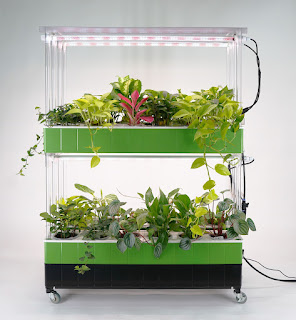When I attended school, I did well. I was good at memorizing information and got good grades on tests. Much of what I learned was not deep learning. I was not a risk-taker and chose to take “safe” classes that would prepare me for college. But I lacked the confidence and missed out on opportunities to stretch myself, to take classes that were out of my comfort zone. I realized that I was very uncomfortable in creative problem-solving types of activities. (Read my blog here: “Why Can’t I Be More Creative?”)
A few years ago, I had the opportunity to attend a Design Thinking class and met Ian Kitajima for the first time. (Read "Ian Kitajima: From surfer to sherpa"). I was self-conscious and felt out-of-my-element with people I didn’t know who jumped right in and seemed to know what they were doing. I, on the other hand, was looking for a “right” answer when there was no right answer. I think my lack of confidence as well as my lack of experiences being in uncomfortable situations added to my self-consciousness.
A couple of years later, Ian invited me to attend an Altino Coding class. I was in one of the first classes they had here in Hawai`i and again, I felt so out-of-my-element. This time, though, I was determined to do my best to learn to code that car. It was not easy, and fortunately, there were people who knew what they were doing and were able to guide me to be somewhat successful. They didn’t do it for me; they helped me to problem-solve and to figure it out myself. I must say it was a pretty good feeling the first time I was able to get that Altino car to do what I had programmed it to do, and I remember that I even programmed additional code to make my car do something more. It was a pretty good feeling!
Earlier this week, my husband and I had an opportunity to spend time with Ian and his wife at their home. After the initial chit-chat, Ian shared his latest Design Thinking project - a Smart Farm where students learn to code the “farms of the future.” (See more about Smart Farms in Korea at this link.) I was intrigued especially because Ian shared that he is partnering with Leilehua High School’s ag-tech program. We had just visited there! (Read my blog “An Amazing Morning”) This Smart Farm is such an amazing project and I’ll admit that for a very quick fleeting moment, I wished I were back as the principal at Daniel K. Inouye Elementary School because then our students could have an opportunity to learn more about building and programming. Ian is such an advocate for our public schools and this is just another way of preparing our students for their future while finding a possible solution for a huge problem here in Hawai`i where 90% of our food is imported. Imagine if our students can be the solution-finders that will help to produce more food for future generations!
When elementary-aged students have opportunities to explore, discover, create, and share using technology, they can amaze us with their creative problem-solving abilities. One year, we did The Marshmallow Challenge with our faculty, and it was interesting to make observations about how adults process an activity like this. Very few of the teams successfully completed the task in the allocated time. However, some of our kindergarten teachers decided to try this activity with their students, and they were pleasantly surprised at how these five and six-year-olds were successful and completed the task. Yet, how often do we provide these kinds of opportunities for our students? Very rarely.
We have a problem. We need to change our focus in schools away from teaching and learning the way we learned in the past. Of course students need to be literate learners, but grades and test scores are not the only indicators of how successful a person will be in the future. Ian Kitajima is a perfect example; he openly shares that he preferred surfing to school, and it wasn't until he went to college that he was challenged and learned to love learning.
Project-based learning. 20% time. Internships. Makerspaces. Community partnerships. Design Thinking. Blended learning. Digital Media. Pathways. Public Exhibitions. These are just a few ways our schools can engage and empower our students in their learning. We need to make time in school for students to explore areas of interest and to find ways for them to share their learning with authentic audiences..
First, though, we need to give our teachers opportunities to explore new ways of teaching in order to engage and empower their students. Unless our educators realize the importance of making changes, schools will continue to be irrelevant for many of our students. I know from my experience as a principal, that teachers want to try out new ideas to engage their students. They loved "The Marshmallow Challenge" and other types of professional learning which they could replicate with their students. They became learners and realized that students could also be teachers especially when they are passionate about an issue or a relevant problem in our community.
Ian asks the question, "How do we create the future we want?" That's what should be the driving question for schools to explore today.



No comments:
Post a Comment